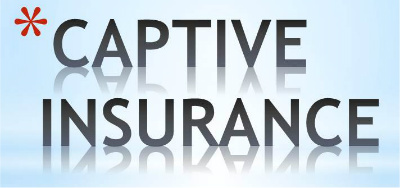Have you ever wondered how to leverage the power of the 831b tax code to unlock your financial success? Look no further, as we delve into the world of captive insurance and explore the multitude of benefits that the IRS 831b tax code can bring. Captive insurance, also known as microcaptive insurance, has become an increasingly popular strategy for businesses to manage risk and potentially reduce their tax liability. It offers a unique opportunity for companies to create their own insurance company, providing coverage for themselves while reaping the financial advantages that come along with it. By taking advantage of the 831b tax code, businesses can significantly enhance their financial position and gain a competitive edge in the market. So, join us on this enlightening journey as we uncover the inner workings of this innovative strategy and learn how to unleash the power of 831b for ultimate financial success.
Understanding the 831(b) Tax Code
The 831(b) tax code, also known as the microcaptive insurance arrangement, is a provision that enables certain small insurance companies, called captive insurers, to enjoy tax advantages. Captive insurance refers to a form of self-insurance, where a company creates its own insurance entity to cover specific risks instead of relying solely on traditional insurance providers.
Under the 831(b) tax code, qualifying captive insurers can receive tax benefits on their premium income. Specifically, if the annual written premiums collected by a captive insurer are $2.3 million or less, they may elect to be taxed only on their investment income while excluding the underwriting income. This unique taxation arrangement can provide significant cost savings and enhance the financial success of eligible companies.
It’s important to note that the Internal Revenue Service (IRS) closely scrutinizes captive insurers to ensure they are operating legitimately and not solely for tax avoidance purposes. Therefore, companies seeking to take advantage of the 831(b) tax code must ensure they comply with all IRS regulations and guidelines concerning captive insurance arrangements.
Understanding the 831(b) tax code is crucial for businesses considering the utilization of captive insurance. By grasping the ins and outs of this provision, companies can make informed decisions about whether establishing a microcaptive is the right financial step for their specific circumstances.
Benefits and Advantages of 831(b) Captive Insurance
Captive insurance, specifically governed by the IRS 831(b) tax code, offers numerous benefits and advantages. This type of insurance arrangement holds several financial opportunities for businesses.
Firstly, captive insurance allows companies to take control of their risk management strategy. By forming their own captive insurance company, businesses can tailor their coverage to meet their specific needs. They have the flexibility to choose the risks they want to insure and determine their own coverage limits. This level of customization empowers businesses to have a more comprehensive and cost-effective risk management solution.
Secondly, utilizing the captive insurance structure enables companies to gain access to potential tax advantages. Under the IRS 831(b) tax code, captives can elect to be taxed only on their investment income, rather than on their premium income. This tax advantage provides the opportunity for businesses to generate substantial tax savings, promoting financial growth and stability.
Additionally, captive insurance fosters long-term financial stability for companies. Instead of relying solely on commercial insurance policies, businesses can establish a captive to create a self-insurance fund. By retaining a portion of their risks, companies can build reserves that can be used to cover future losses or reinvested in the company. This ability to create financial reserves enhances a business’s overall risk management strategy and acts as a foundation for long-term financial success.

In summary, the benefits and advantages of utilizing an 831(b) captive insurance arrangement include increased control over risk management, potential tax savings, and the establishment of financial stability. By unlocking the power of 831(b) captive insurance, businesses can position themselves for greater financial success and achieve their risk management goals.
Considerations for Setting Up a Microcaptive Insurance Company
When considering setting up a microcaptive insurance company under the IRS 831(b) tax code, there are several important factors that you need to take into account.
Firstly, it is essential to understand the concept of a microcaptive insurance company. It refers to a small captive insurance company that is owned by the insured parties, often with the main purpose of insuring the risks of their own businesses. This allows them to have more control over their insurance coverage and potentially enjoy tax benefits.
Secondly, before proceeding with the establishment of a microcaptive, it is crucial to evaluate the risks involved. Conduct a thorough risk assessment of your business and identify the potential risks that the microcaptive will be insuring. This will help ensure that forming a captive insurance company is a suitable and effective strategy for your specific circumstances.
Lastly, compliance with the IRS regulations is of utmost importance. To qualify as a microcaptive under the 831(b) tax code, certain criteria must be met. Familiarize yourself with the requirements and maintain meticulous records to ensure compliance with the tax code. It is also prudent to seek guidance from tax and legal professionals who specialize in captive insurance to ensure all necessary steps are taken properly.
By carefully considering these factors, you can better navigate the process of setting up a microcaptive insurance company and unlock the financial benefits associated with it.